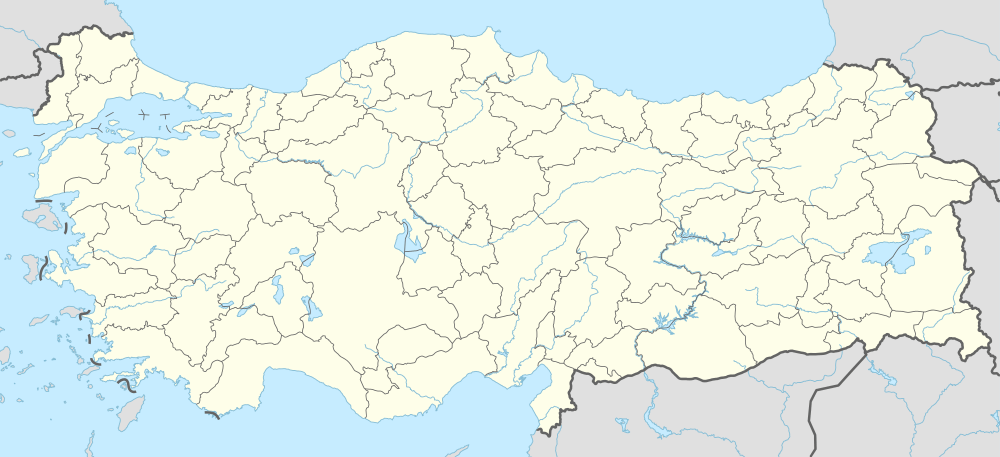Pitane (Aeolis)
| Πιτάνη (Ancient Greek) | |
 Shown within Turkey | |
| Location | Çandarlı, Izmir Province, Turkey |
|---|---|
| Region | Aeolis |
| Coordinates | 38°55′41″N 26°56′14″E / 38.92806°N 26.93722°ECoordinates: 38°55′41″N 26°56′14″E / 38.92806°N 26.93722°E |
| Type | Settlement |
Pitane (Greek: Πιτάνη), near Çandarlı, Turkey, was an ancient Greek town of the ancient region of Aeolis, in Asia Minor.
History
Excavations in the necropolis of Pitane revealed ceramic finds from the Mycenaean, protogeometric, geometric, orientalizing and the Archaic Greece periods.
Pitane is believed to be the northernmost point of the Mycenaean influence in Anatolia.
A kouros from Pitane, dated to the 6th century BC, is now housed at the Bergama Archeological Museum.
Classical Period
In the fifth century BCE Pitane was a member of the Delian League and is recorded as paying a tribute of 1,000 drachmas.[1] In 335 BCE, Alexander the Great's general Parmenion laid siege to the city as part of a campaign against the Persian Empire, but the city was saved by the Persian general Memnon of Rhodes.[2]
Hellenistic Period
In ca. 319 BCE its citizen Herakleitos son of Lysistratos was honoured by the people of Delphi, and in the period ca. 325 - ca. 275 BCE the people of Abydos honoured another citizen, Charidemos son of Antiphanes with a dedication at Delphi which included a statue by the famous Athenian sculptor Praxiteles.[3] In the reign of the Seleucid king Antiochus I Soter (r. 281-261 BCE), Pitane was able to expand its territory by paying the king 380 talents to purchase some territory.[4] This territory was the subject of a dispute with the city of Mytilene on nearby Lesbos in the mid-second century BCE which was arbitrated by Pergamon.[5] We also learn from this document that in the Hellenistic period Pitane was a free city not subject to the Attalid dynasty and its public document no longer used the Aeolic dialect. In 84 BCE Mithridates VI while evading the Roman general Gaius Flavius Fimbria fled to Pitane, where he was besieged by Fimbria before escaping to Mytilene by sea.[6]
Notable people
- Autolycus (ca. 360 - ca. 290 BCE), mathematician.
- Arcesilaus (316/5-241/0 BCE), founder of Academic skepticism
- Matro (late fourth century BCE), author of the epic parody The Attic Feast.[7]
References
- ↑ IG I3 260-6, 268-73, 279, 281.
- ↑ Diodorus Siculus 17.7.9.
- ↑ Fouilles de Delphes III (1) 410 (Herakleitos), (4) 215 (Charidemos).
- ↑ IG XII Supplementum 142 = OGIS 335.
- ↑ IG XII Supplementum 142. See further I. Savalli-Lestrade, ‘Eumène (Ier) et l’expansion de Pergame: à propos de IG XII Suppl. no. 142’ Revue des Etudes Grecques 105 (1992) 221-30.
- ↑ Plutarch, Lucullus 3, Appian, Mithridatica 52.
- ↑ S. D. Olson and A. Sens, Matro of Pitane and the Tradition of Epic Parody in the Fourth Century BCE: Text, Translation, and Commentary (Oxford 1999).